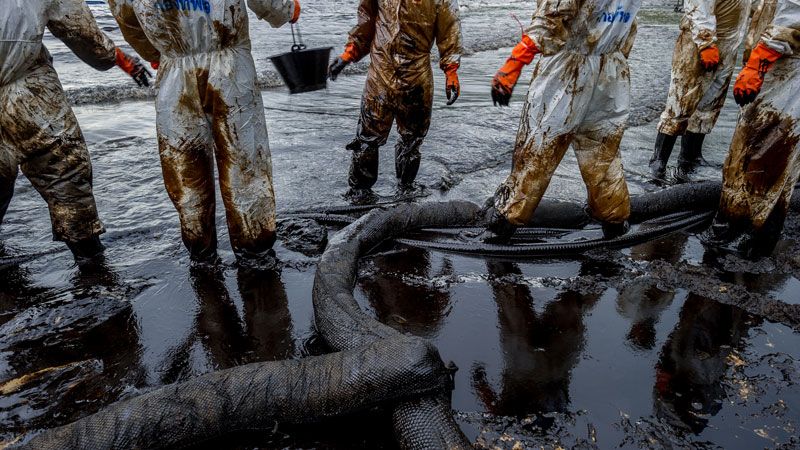
3 Essential Paramaters for Inland Oil Spill Response
A site contaminated by an oil spill is replete with hazardous gases and chemicals. People in the vicinity of the site and staff working to contain the oil spill are at risk of developing eye, skin, or respiratory irritations, tremors, confusion, unconsciousness, etc. Long-term exposure to these harmful chemicals can cause cancer, and liver, lung, and kidney disease, among various other health hazards.
An oil spill response requires trained personnel and equipment to contain and recover the oil spillage. Ignorance can be dangerous in such a situation.
The following 3 paraments are essential for an effective response that minimizes the risk, and effectively contains and recovers the spill.
A Tailored Response
An oil spill response must be tailored to the surroundings and the readily available equipment. There are major differences in the response to an oil spill near a grassland and one in an urban area.
Farms and Grasslands
Farms and grasslands are characterized by an abundance of open soil and small plants. The primary concern is to stop the oil from leaching into the soil. Oil can block plants’ access to water and choke them. Other possible dangers include the contamination of underground water and nearby water bodies.
Here, berms and trenches can be used to contain the spill. However, they are not a permanent solution, as the risk of oil seeping into the underground water still remains.
Surface soil can be removed using liquid vacuum systems and skimmers, and the contaminated soil can be mechanically removed. Other methods like sorbents and in-situ burning can be used as needed.
Urban Areas
Populous areas like towns and cities present a different set of challenges. The primary responses include building a safe perimeter and containing the spill. Transportation accidents in urban areas can obstruct traffic, which also needs to be managed by trained staff.
Apart from potential contamination of groundwater and streams, there’s a risk that oil will runoff into the sewage system. The spilled oil must be recovered quickly using sorbents, liquid vacuum systems, or skimmers.
The Proper Equipment
Different types of equipment are used to contain and remove an oil spill. Here is the most common inland oil spill response equipment:
Containment Equipment
- Floating Boom - Booms are made of oil-absorbent materials and float on water bodies to act as barriers. They can be used to contain the oil spill or divert or deflect the flow of water and the contamination. Their shape and size vary in size; they can be stretched for miles.
- Land boom - Land booms are also made of oil-absorbent material, but the length of the barrier is considerably less than floating booms. Sandbags can also be used as a barrier for an oil-spill response on land.
Recovery Equipment
- Skimmers - Skimmers are used to remove oil from water bodies like inland rivers, lakes, streams etc. Different types of skimmers are suited for different types of oil being recovered. They can be self-propelled or operated from shore or a vessel.
- Sorbents - Sorbents are made from oil-absorbent material. They look like thin sheets floating on water and are used to remove the final traces of oil.
- Vacuum cleaners - Liquid vacuum cleaners are used to effectively recover land oil spills. They are a part of a vacuum system with a tank to store the recovered liquid and transported are in trucks.
- Response trucks and vehicles - Oil-spill response vehicles are designed to operate in all types of terrain. The trucks store and carry booms, skimmers, and other types of equipment. Some trucks have containers to store recovered oil and equipment used to decontaminate wildlife.
- Personal Protective Equipment - PPE kits consist of suits, gloves, face shields, boots, respirators, etc.
PPE kits have four different levels of safety:
- Level A –This provides safety in the most hazardous environments. The suit is reinforced to prevent vapors from coming into contact with skin and respiratory systems. The responders wear a self-contained breathing apparatus, as no contact with the outside environment can occur.
- Level B - These PPE kits are not vapored tight but offer respiratory and skin protection. An air-purifying respirator is provided for breathing.
- Level C - These kits are used in relatively safer environments where the concentration of harmful chemicals is known to below. These suits are also equipped with air-purifying respirators.
- Level D - Level D kits are meant to protect everyday work clothes. They offer no skin or respiratory protection.
A Trained Response Team
An oil-spill response team consists of highly trained individuals who are well-versed with using the equipment, guiding other people to safety, and managing dangerous situations.
The team is trained to quickly contain the spill and limit the damage. Once the spill is contained, a speedy recovery can be made.
Untrained responders put themselves and others in potential danger. For example, trying to contain a crude oil spill high in benzene components without protective equipment can expose a person to the risk of cancer.
Enviro Care’s response team is approved by OSRO (Oil Spill Response Organization). We have successfully decontaminated many oil spill sites across Utah, Nevada, Idaho, and Wyoming.
How to Respond in an Emergency
When an accident causes an oil spill, remember that oil is highly flammable. Shut down any source of heat and ignition to prevent a fire. Oil can also cause skin, eye, respiratory, and gastronomic irritation. If the fumes from the oil present a health hazard, the area should be contained.
Alert others about the spill as soon as possible. There may be someone who is trained at the site who can respond. It’s best to have a facility response plan ready.
Call 911 and look for a nearby oil-spill response team on Google or call Enviro Care’s 24-Hour Emergency response unit at (800) 820-9058.
